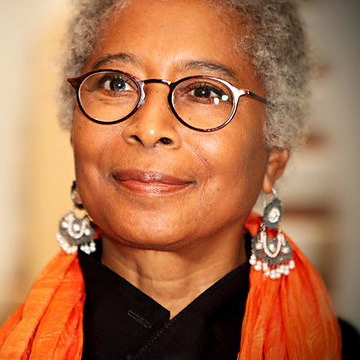Everyday Use
5 min read ⌚
 For today’s summary/lesson, we would like to ask you one very serious and overly complex question. Namely, how do you fight a centuries-long past of brainwashing without loudly rebelling in the present?
For today’s summary/lesson, we would like to ask you one very serious and overly complex question. Namely, how do you fight a centuries-long past of brainwashing without loudly rebelling in the present?
Alice Walker asks the same question in her celebrated short story “Everyday Use.”
Who Should Read “Everyday Use”? And Why?
During the past fifty years or so, many governments have tried giving minorities their rights back.
However, as Alice Walker’s “Everyday Use” teaches, things are not as simple as “we’re all equal from now on – so let’s act like that.”
Because… what about the past?
What about all those years when we were not so equal and when some suffered so much that their grandchildren still feel the pain as if their own?
You can’t say that it’s fair play if the referees are finally unbiased, when the other team got all the calls for three and a half quarters and is leading by a hundred points!
And it’s even worse – the very game we’re playing is suited only to the qualities of the other team.
You don’t understand what we’re saying?
Read “Everyday Use.”
Or simply – read ahead.
Alice Walker Biography
Alice Walker is an American novelist and poet, one of the preeminent writers in modern American literature. She is also an outspoken feminist, even coining the term “womanist” to launch a black/colored feminist movement worldwide.
is an American novelist and poet, one of the preeminent writers in modern American literature. She is also an outspoken feminist, even coining the term “womanist” to launch a black/colored feminist movement worldwide.
Alice Walker came to prominence in 1983 when she became the first Black-American writer to win a Pulitzer Prize for fiction for her novel “The Color Purple.”
The book also won her the National Book Award and was adapted into a highly successful movie just two years later by none other than Steven Spielberg. The film, starring Danny Glover, Whoopi Goldberg and Oprah Winfrey, was nominated for 11 Academy Award.
Alice Walker is also the author of other acclaimed books such as “The Third Life of Grange Copeland” and “Meridian” and is famous for reviving the interest of literary critics into the work of Zora Neale Hurston, the now acclaimed author of the unavoidable “Their Eyes Were Watching God.”
Book Summary
By prioritizing African American women’s voices for the first time, “Everyday Use” anticipated the focus of an entire generation of black women writers. Let’s dive in.
The main protagonist and the narrator of “Everyday Use” is Mrs. Johnson, an African-American woman from the South and the mother of two very different children – Maggie and Dee.
Hence, the name by which she is usually referred throughout the story: Mama.
Now Mama, just like many other women in the past, lives two lives.
One is in her fantasy:
I am the way my daughter would want me to be: a hundred pounds lighter, my skin like an uncooked barley pancake. My hair glistens in the hot bright lights. Johnny Carson has much to do to keep up with my quick and witty tongue.
And the other one is her real life:
In real life I am a large, big-boned woman with rough, man-working hands. In the winter I wear flannel nightgowns to bed and overalls during the day. I can kill and clean a hog as mercilessly as a man. My fat keeps me hot in zero weather.
Now Mama, being black, didn’t even have an option to expect that much from life. In fact, after she finished second grade, her school closed down.
Why?
Don’t ask her why, she says: “in 1927 colored asked fewer questions than they do now.”
Mama lives currently with Maggie, who wasn’t that blessed with luck either. “She knows she is not bright,” says Mama. “Like good looks and money, quickness passed her by.”
Other things passed her by too, as well.
And she has scars to prove it: she was burned in a house fire that happened over a decade before the events of the story take place!
So far, so “Glass Castle”-like, isn’t it?
Now Mama and Maggie are waiting for Dee to visit them.
Unlike Maggie, Dee is beautiful and stylish, smart and full-figured. Also: with the money provided by her Mama and her community, she was privileged enough to leave her home some time ago to study in Augusta.
And now she comes back.
And, boy, what an entrance hers is!
First of all, she’s not alone – but with someone who may be her boyfriend, fiancée, or even husband.
And that someone is an Arab whose name Mama can’t pronounce well enough, so we’re stuck with Hakim-a-barber.
Although he’s not a barber, nor is he interested in being a farmer or herder like his probable family and Mama’s whole community.
His name is not the only name which posits a problem for Mama.
You see, Dee’s not Dee anymore.
She’s now Wangero Leewanika Kemanjo.
Even though she got her name from her Auntie, who got hers from her mother, who… and so on. How does Dee dare to erase a name that has been transmitted through so many generations?
Simply put, because it is exactly what has made her invisible.
Because she is not a Dee – just like none of those 60 million slaves were before being brainwashed in the U.S.!
In other words: Wangero has a point to prove.
Everyday Use Epilogue
Mama, on the other hand, has a dinner to make.
So, everybody sits down to eat.
Dee, however, is not here for the food – she has a bigger agenda on the menu.
First of all, she wants to take the top of a butter churn made by her uncle. Then, she wants to take two handmade quilts as well.
Oh no!
Everything but the quilts – says Mama, telling Dee – pardon, Wangero – that they are reserved for Maggie, from whom life has taken just too much so far to take from her the quilts as well.
But Wangero insists.
Her reasoning?
Maggie will ruin them with “everyday use”; Wangero understands their importance as cultural artifacts.
Cultural-shmultural, says Mama – they are made for practical use and what use would anyone have from them if they sit on someone’s shelf?
The quilts stay with Maggie!
Wangero has had it!
She tells Mama that, unlike her, she doesn’t understand her own heritage.
And that she’s about to change that for everyone else.
Finally, she leaves, and Maggie and Mama, once again, sit in the yard watching Wangero and Hakim-a-barber drive off in the distance.
Like this summary? We’d like to invite you to download our free 12 min app, for more amazing summaries and audiobooks.
“Everyday Use Quotes”
Maggie thinks her sister has held life always in the palm of one hand, that ‘no’ is a word the world never learned to say to her. Share on X After second grade the school was closed down. Don’t ask me why: in 1927 colored asked fewer questions than they do now. Share on X Dee (Wangero) looked at me with hatred. ‘You just will not understand. The point is these quilts, these quilts.’ Share on X I am the way my daughter would want me to be: a hundred pounds lighter, my skin like an uncooked barley pancake. My hair glistens in the hot bright lights. Share on X She used to read to us without pity; forcing words, lies, other folks’ habits, whole lives upon us two, sitting trapped and ignorant underneath her voice. Share on XOur Critical Review
“The Color Purple” may be Alice Walker’s most famous novel, but “Everyday Use” is her most celebrated and oft-interpreted short story, “a cornerstone of her work.”
Aristotle, writing back in the beginning of time, remarked that people prefer tragedy to epic because they both have the same effect on the recipient, but the former one achieves it in much shorter period.
Now, “The Color Purple” is about 300 pages long, and its film adaptation lasts two and a half hours. And you’ll need minutes to read “Everyday Use.”
We’ll let you do the math.
Emir is the Head of Marketing at 12min. In his spare time, he loves to meditate and play soccer.







